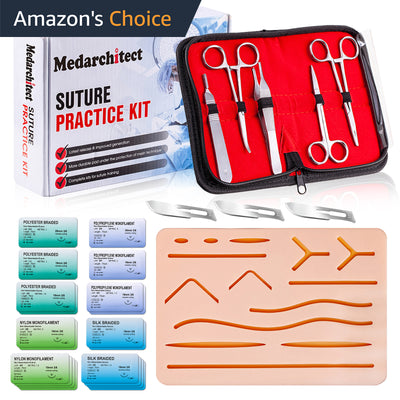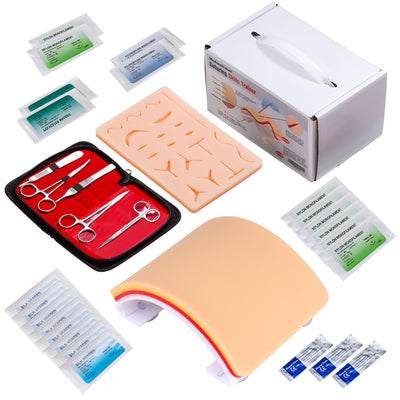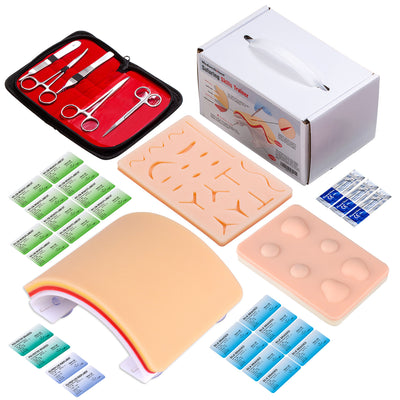The simple interrupted suture technique has a long and fascinating history in the field of medicine. From its ancient origins to its modern-day applications, this technique plays a crucial role in wound closure. In this blog, we will explore the rich history, functioning, applications, and significance of the simple interrupted suture technique. We will also delve into its role in medical education and advancements, as well as understand when and how this technique is utilized for optimal wound closure.
-
The Historical Journey of Simple Interrupted Suture Technique: The art of suturing wounds dates back to ancient civilizations, where various materials like plant fibers and animal tendons were used. However, the simple interrupted suture technique, as we know it today, has evolved over centuries. It was refined and standardized during the Renaissance era by pioneering surgeons, laying the foundation for modern surgical practices. Exploring its historical development helps us appreciate the advancements made in wound closure techniques.
-
How the Simple Interrupted Suture Technique Works: The simple interrupted suture technique involves the use of a single thread to stitch a wound in a series of individual, separate stitches. It begins with the insertion of a needle through the skin and tissue on one side of the wound, followed by passing the needle through the opposing side. The thread is then tied off, creating a secure knot. This process is repeated at regular intervals along the wound until it is fully closed. Understanding the mechanics of this technique is essential for achieving proper wound closure and promoting optimal healing.
-
Applications of Simple Interrupted Suture Technique: The simple interrupted suture technique finds wide applications across various medical specialties. In general surgery, it is commonly used for closing surgical incisions, lacerations, and traumatic wounds. In plastic surgery, this technique allows for precise wound closure, minimizing scarring and promoting favorable cosmetic outcomes. It is also utilized in ophthalmic surgery for delicate procedures like cataract removal and corneal repair. Additionally, the technique plays a significant role in oral and maxillofacial surgery, obstetrics, and gynecology, where it is employed for wound closure and reconstruction.
-
When and Why to Use Simple Interrupted Suture Technique: The choice to use the simple interrupted suture technique depends on several factors, including wound characteristics, location, and tension requirements. It is often preferred when wounds have uneven or irregular edges, as the individual stitches allow for precise alignment and tension adjustment. This technique is also beneficial when cosmetic outcomes are a priority, such as in facial surgeries. The simplicity and versatility of this technique make it a popular choice for a wide range of wound closure scenarios.
The simple interrupted suture technique has a remarkable history and remains a fundamental aspect of wound closure in medical practice. Its versatility, simplicity, and effectiveness make it a preferred choice for various surgical procedures. Understanding its historical significance, mechanics, applications, and appropriate usage empowers healthcare professionals to achieve optimal wound closure and contribute to the advancement of patient care. As we continue to innovate in surgical techniques, the simple interrupted suture technique continues to play a vital role in medical education and practice.

![Suture Practice Kit (42 Pieces) for Suture Skill Training Include Suture Pad 8 x 8 Inches with 31 Pre-Cut Wounds, Training Tools (Extra Kit) - [shop_medarchitect]](http://mediarchitect.net/cdn/shop/products/ultrasutrurepracticekit-1600X1600.jpg?v=1622173132&width=400)







